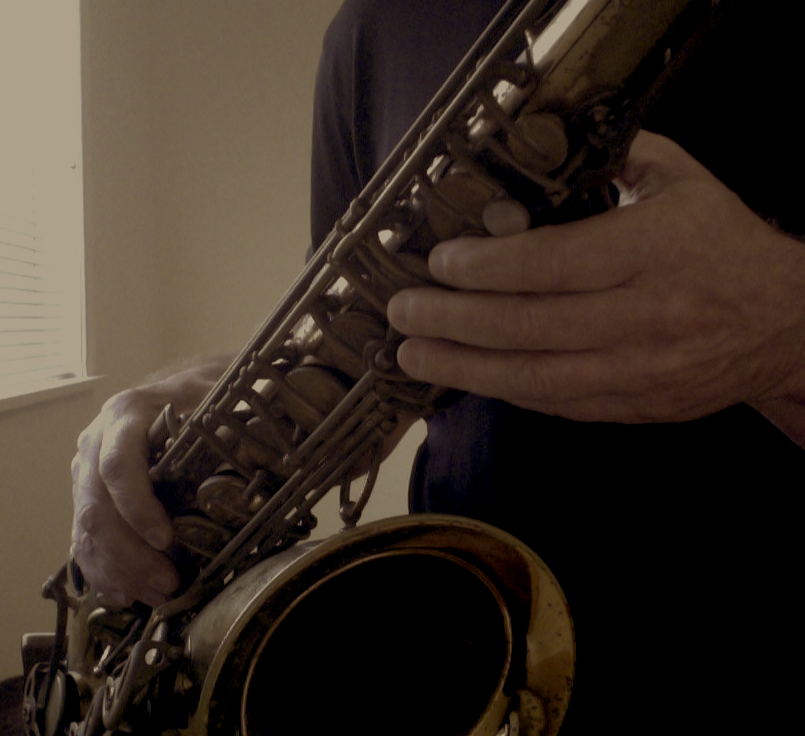
The first time I give an Alexander Technique lesson to any musician, there are three things in particular that I’m going to pay the closest attention to before they even play one note on their instrument:
1. How they describe the problem (or perceived need) that led them to see me for help.
2. How they maintain their upright “stature” (habits of misuse or imbalance in sitting, standing and moving in general).
3. How they assemble their instrument to prepare to play.
It is this third thing (assembling the instrument) that I wish to address in this post.
What I often see in a first lesson when a musician gets ready to take the instrument out of the case, is a considerable amount of what we refer to in the Alexander Technique as “misuse”.
Usually this entails lots of compression in the body:
Head pulled down onto the spine.
Shoulders narrow and held.
Arms, fingers and hands tensing up.
Forehead wrinkling as the eyes go into a fixed and narrow gaze.
Ribs being held to temporarily hold the breath.
Spine collapsed and knees locked while bending to pick up the instrument.
And more.
In short, lots of misdirected effort…
Plus, there is nearly always a sense of hurriedness in the entire process, as if the “task” of putting the instrument together is just some mindless necessity to get out of the way so that the “real” activity can actually start.
Yet it is the very act of preparing your instrument that can have a profound impact upon how you proceed with the rest of your practice session. Most notably in two ways:
First, how you’re organizing your attention to prepare for the work ahead.
Second, what you’re doing in your body as you prepare for this work. (To be clear, both of these things are inextricably related.)
Whenever I see a musician “scramble” to mindlessly assemble the instrument, what I also notice in their “use” as they begin to play is simply a continuation of that same psychophysical state. In other words, misdirected effort in assembling is followed by a similar misdirected effort when actually playing.
So when you practice each day, consider paying attention to what you are doing with yourself as you move toward, and assemble, your instrument.
Here are some things to keep in mind and to aim for:
Give yourself time. It all starts here. Not only in being more leisurely in how you approach and assemble your instrument, but also giving yourself a chance to return to the present moment. Think of it as a brief “warmup meditation”.
Aim for light, easy and balanced. Whether you’re sitting or standing, allow yourself to release into the length and width of your full stature. No need to sit up or stand up “straight”, simply let the ground support you and expand upward and out into the room.
Breathe. You don’t need to take a breath, or even breathe deeply. Just bring your attention gently to your nostrils and notice that you already are breathing. Taking time in doing so is moving you in the right psychophysical direction for practice.
Proceed with freedom and ease. Be mindful of how you move toward your instrument. As you bend, allow your hips knees and ankles to work together in a gently integrated way. Aim for balance, suppleness, and lively but light mobility.
Be kind to the case. If you’re instrument is in its case, take your time opening latches, zippers, etc., As you do so, pay attention (and wish for) the same easy, spacious use of yourself you had in moving toward your instrument.
Be kind to your instrument. Aim for the same quality in your hands as you reach for your instrument you’d like to have when you’re actually playing it. It is sometimes this first contact with your instrument that can set the tone and mood of your practice session. And of course, assemble it with love, care, and a sense of gratitude. (You’re getting ready to do the thing that lights up your heart and soul!)
Be kind to yourself. Expect good things. Caress that first note with a gentle curiosity, as if you’re gradually discovering your sound. Listen to and realize that sound, then wish for more as you continue to explore and shape your sound to suit your imagination.
So notice how you approach and assemble your instrument when you begin your practice session. Discover how being gently mindful in doing so can become an essential part of an efficient and effective warm up. Follow the procedures I’ve detailed above, and enjoy the difference!